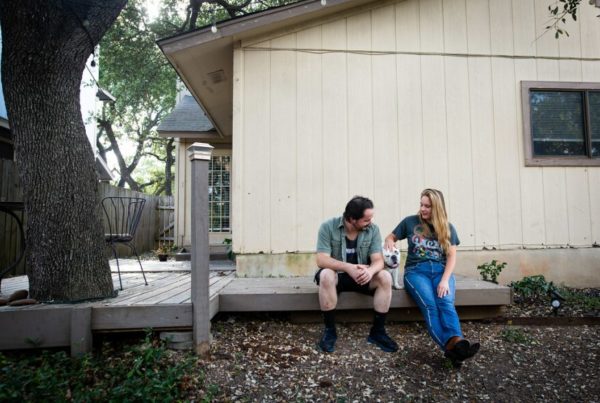Water is already scarce in the Texas Panhandle. Climatologists predict it will only get scarcer.
That’s why a team of researchers is using a $10 million grant to discover and apply new agricultural techniques to support farmers and ranchers there. Katie Lewis is a soil scientist for Texas A&M AgriLife Extension Service and the lead researcher for the grant. She told Texas Standard that the goal is to help farmers and ranchers build sustainability, both in economic and environmental terms.
This transcript has been edited lightly for clarity:
Texas Standard: It’s my understanding that this grant is largely focused on furthering regenerative practices in agriculture. Could you explain more about what regenerative practices look like and how they’re different from traditional methods?
Katie Lewis: One of the biggest challenges that we have across Texas and Oklahoma is our limited rainfall and limited irrigation quantities. And so one of the things that regenerative agriculture is really aiming to do is to try to increase the use of emergency of what water we do receive or that we do have. And so, in this proposal or this project that we’re going to be working on, regenerative agriculture is focused on implementing what’s traditionally been considered more conservation type practices. So reduce tillage, cover cropping crop rotations. And what makes this project stand apart from some of the others is that we’re also going to be implementing grazing into the production systems.
Tell us a little bit more about that, and regenerative practices.
So with grazing, we’re adding another income stream into these systems. One of the ideas of the project is to reduce our fallow period. So grazing would be again, an additional income stream where during that fallow period we would implement a summer cover crop that would then serve as a food source for the cattle that would be grazing that land.
It sounds like part of the goal here is not just figuring out how to maintain agricultural life as it has been, but really figure out how much needs to change here.
Exactly. And a big part of what gets left out when we talk about sustainability – most of our our focus tends to lie more on the environmental side of it, for good reason. But I think we also need to be talking about the economic side of things because we want farmers to continue to farm and to do so in both an environmentally and economically sustainable way.
A key area of focus in this grant is carbon sequestration. Could you explain what that is and how that’s going to be useful to farmers and ranchers?
Carbon sequestration is definitely a big focus area within our government and [for] policymakers, currently. But I think it’s always been something that farmers are doing. Maybe we just haven’t really described It as carbon sequestration. So growing a crop is carbon sequestration. That crop is capturing CO2 out of the atmosphere and returning that to the soil with the hopes that it will be stored there for long periods. And when we implement things like cover crops and reduce tillage, that increases the potential for carbon capture and storage for long term in the soil.
Isn’t there a flip side if you’re going to have more grazing? We’ve all heard about the effects of on the environment when it comes to cattle and meat.
That’s correct. There can be increased methane emissions from the cattle. But again, we’re trying to optimize these systems, not just from an environmental way, but also an economic way. And so there’s always going to be have to be a balance that is found between these different systems.
Now you get to take this research and apply it to the real world. How do you go about doing that?
Not only are we doing more of the small plot type research looking at these different practices and trying to optimize those, we’re also taking this to the farm. We will be working with farmers across to Texas and Oklahoma Plains, where we are evaluating their management practices, looking not just at the carbon and greenhouse gas effects that these practices have, but also looking at the economics.















